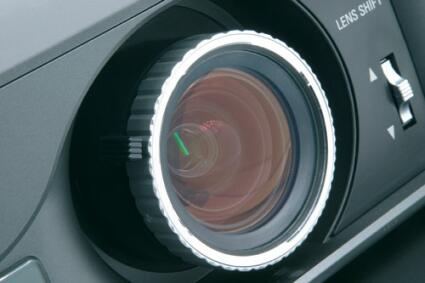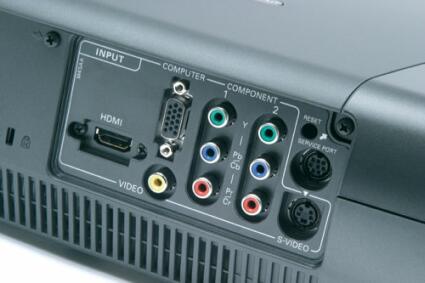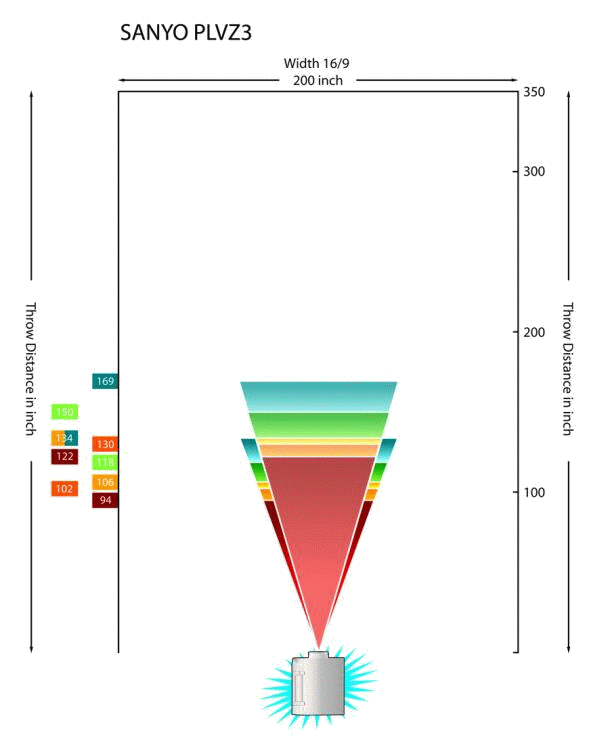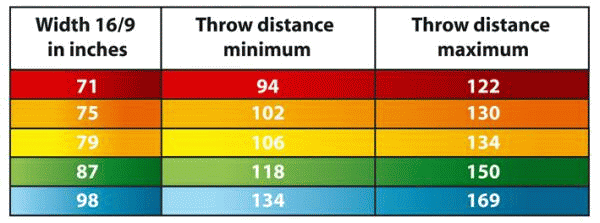Video Projectors: Evolving Towards High Definition
Quality In Action
At a distance of 11' (3.4 m) from the screen, the PLV-Z3 is capable of displaying an 8.2' (2.5 m) image in 16:9 format. After an easy setup and configuration process, we went straight to our usual test patterns. The result was very convincing for a tri-LCD projector. The whites were bright while still maintaining a good level of black depth. Colors were rich and had good saturation, but could have shown a bit better definition on our test pattern. The stability of the image was perfect and the sharpness was flawless, all over the screen - the HD imager has a lot to do with that. The video mode adjustments will give you a much better overall result for Home Theater use. We noted no problems with geometry, either in the 16:9 or 4:3 aspect ratios.
We tried Gladiator, Finding Nemo, The Matrix, and Blade II - our benchmark movies - on the Sanyo. The results were excellent, with no screen-door effect visible, superb image definition, and a very pleasant cinematic experience. The darkest scenes were reproduced correctly, and significantly better than tri-LCD has been able to do up to now. In progressive scan, we noticed almost no problems with aliasing, and backgrounds were well-defined and stable. Also, since progressive-scan processing is directly built into the projector, you'll be able to use a DVD player with no progressive output signal.
Overall, this is the best projector we've seen in this price range using LCD technology. However, don't forget that DLP is still the best solution currently available. There is also the D-ILA technology from JVC, but unfortunately it's still not widespread enough.
The second big advantage of the Sanyo is its HD imager, which we were in a hurry to test with HD sources. We connected it to our PC and screened some Microsoft WMHD video in 720p and 1080i. If you try this, prepare yourself for a shock! The picture was literally transformed - the tiniest details were visible, and scenes were razor-sharp. We couldn't believe our eyes. Going back to a standard signal, even in progressive scan, is difficult once you've experienced it.
The problem is that HD sources are still hard to find. So we tried a DVD player capable of putting out a 720p signal via the HDMI or DVI output with an ordinary DVD movie. And there again, the amount of detail, the stability and aliasing, and the depth of field all gained tremendously. The results were short of what you'd get with natively HD-encoded video, but the difference is enough to make you consider getting a new DVD player. Just for information, this type of player currently costs between $600 and $1,200. Combined with the PLV-Z3 at $1,900, for less than $3,000 you'll get image quality that was unimaginable less than a year ago.
Pros: Native 720p, ease of installation, quiet operation, good blacks in cinema mode, HDMI
Cons: Contrast is only average
Get Tom's Hardware's best news and in-depth reviews, straight to your inbox.




